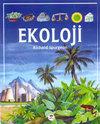土耳其Saricay Creek等足类水草(Asellus aquaticus)重金属积累、生物标志物响应及氧化应激敏感性
Q3 Environmental Science
引用次数: 9
摘要
本研究采用理化参数、水体重金属浓度、生物机体生化反应相结合的方法,评价了水体污染对水曲霉可能造成的氧化应激。为此,在Saricay Creek沿岸选择了三个站点收集了水藻样本,其中一些地区暴露在生活和工业污染中。采样站是根据水浒个体所处的重金属含量和理化参数,从被解释为污染或清洁的区域中选择的。物种确定后,进行重金属(Cu、Fe、Cd、Pb和Zn)和生物标志物(Na+/K+- atp酶、谷胱甘肽和TBARS)分析。根据水质分析,S3为污染最严重的站点,S2为中度污染站点,S1为清洁站点。S2和S3站点谷胱甘肽(GSH)含量随污染程度的增加而显著增加。然而,作为脂质过氧化和Na + /K + - atp酶活性指标的TBARS水平没有统计学差异。受污染地区GSH水平显著升高(3倍),表明水体污染引起水藻物种氧化应激。结果表明,生态、物化、生化参数可共同用于水体污染的识别和评价本文章由计算机程序翻译,如有差异,请以英文原文为准。
Heavy Metal Accumulation, Biomarker Responses and Sensitivity to Oxidative Stress in Isopoda Asellus aquaticus from Saricay Creek (Canakkale-Turkey)
In this study, the possible oxidative stress that water pollution may cause to Asellus aquaticus is evaluated using the physico-chemical parameters, the heavy metal concentration in the water, and organism and biochemical responses in the living organisms being combined together. For this purpose, the A. aquaticus samples are collected by choosing three stations along the Saricay Creek, some of whose regions are exposed to domestic and industrial pollution. Sampling stations are chosen from regions that are interpreted as polluted or clean according to the heavy metal content and physico-chemical parameters where the A. aquaticus individuals live. After the determination of species is performed, the heavy metal (Cu, Fe, Cd, Pb, and Zn) and biomarker (Na+/K+-ATPase, Glutathione, and TBARS) analyzes were made. According to the water quality analysis, S3 was the most polluted station, S2 was a moderately polluted station, and S1 was determined as a clean station. A considerable increase in the amount of glutathione (GSH) was detected in the S2 and S3 stations in parallel with the increase of pollution. However, there were no statistical differences in the TBARS levels as an indicator of lipid peroxidation and Na + /K + -ATPase enzyme activity. The significant increase (three-fold) of the GSH levels in the polluted areas indicates that water pollution causes oxidative stress in the A. aquaticus species. These results show that ecological, physico-chemical, and biochemical parameters can be used together to identify and evaluate the water pollution in rivers that are
求助全文
通过发布文献求助,成功后即可免费获取论文全文。
去求助
来源期刊

Ekoloji
环境科学-生态学
CiteScore
1.10
自引率
0.00%
发文量
0
审稿时长
>12 weeks
期刊介绍:
Cessation. Ekoloji is an international journal that focuses on papers that report results from original research on all disciplines engaged in the field of environmental research. We welcome articles that cover the entire spectrum of environmental problems and environmental pollutants, whether chemical, biological or physical. Its coverage extends to all environmentally related issues: air and water pollution, solid waste, noise, recycling, natural resources, ecology and environmental protection. It includes articles on basic and applied environmental pollution research, including environmental engineering and environmental health. All types of pollution are covered, including atmospheric pollutants, detergents, fertilizers, industrial effluents, metals, mining wastes, oil, pesticides, plastics, radioactive materials and sewage. It also includes research papers on ecological and environmental issues such as climate change, biodiversity. The primary criteria for publication are scientific quality and ecological/environmental significance.
The journal will be read and contributed to by biologists, applied ecologists, environmental scientists, natural resource specialists, environmental engineers, environmental health specialists, agro-ecologists, veterinaries, agricultural engineers, landscape planners and designers. The journal welcomes full "research papers" and short "research notes", only in the English language.
 求助内容:
求助内容: 应助结果提醒方式:
应助结果提醒方式:


